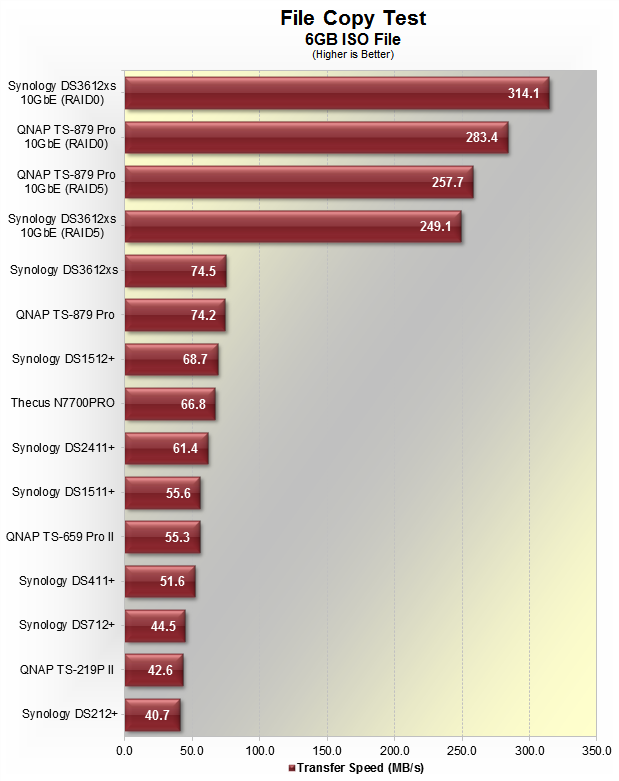Hoping to drive small and medium business sales, NAS-makers have been pushing to deliver enterprise features such as cloud storage, virtualization support, automated backup software and iSCSI support. There's also been an effort to include technologies such as Link Aggregation, which can increase network bandwidth when dealing with multiple users and also provides redundancy in case one of the links fails.
It's possible to use Link Aggregation on several ports, so if a NAS device has four ports, it's possible to create a pair of aggregated ports. However, this presents a problem as it occupies many ports on the switch and any one connection is still limited to Gigabit speeds. As a result, we've started seeing high-end business-oriented NAS devices that provide optional 10 Gigabit Ethernet (10GbE) support.

First seen over a decade ago, 10GbE is not a new technology, but it's been largely reserved for pricey enterprise devices. It's ten times faster than Gigabit Ethernet and only supports full duplex point to point links, which are generally connected by network switches, so 10GbE hubs don't exist.
The 10GbE standard is slowly gaining momentum. One million ports where shipped in 2007, twice that volume was moved in 2009 and three million were shipped in 2010. That figure will only continue to increase as 10GbE networking becomes a more affordable option for small to medium businesses.

Obviously the speed is there, so it's a matter of whether you need this kind of throughput or not.
With that in mind, we're checking out two new high-end SMB NAS devices: the QNAP TS-879 Pro, which costs $2,200 without its optional 10GbE network card, and the $3,500 Synology DS3612xs.
Evidently both devices sell for a premium, but considering their somewhat unique capabilities they could prove to be invaluable for many businesses. Read on.
